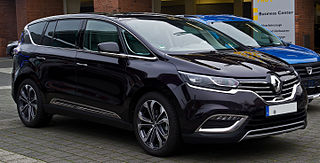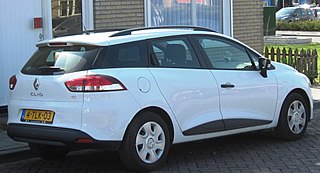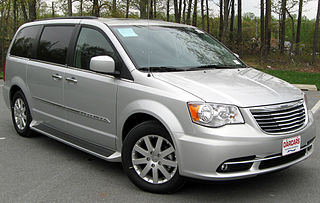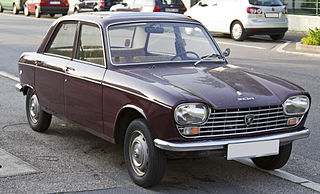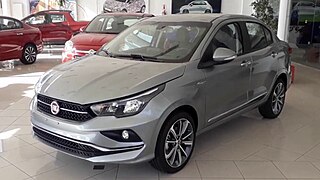It has been suggested that this article be merged with Pillar (car) . (Discuss) Proposed since May 2018. |
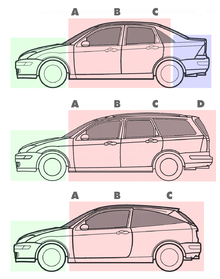



Three-box design is a broad automotive styling term describing a coupé, sedan, notchback or hatchback where—when viewed in profile—principal volumes are articulated into three separate compartments or boxes: engine, passenger and cargo. [1]

A coupé or coupe is a two-door car with a fixed roof. In the 21st century there are four-door cars with a coupé-like roofline sold as "four door coupés" or "quad coupés".
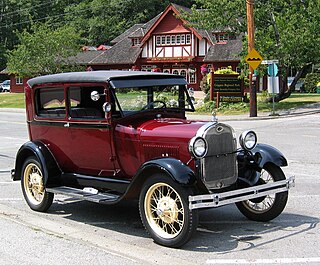
A sedan — also saloon — is a passenger car in a three-box configuration with separate compartments for engine, passenger and cargo.

A notchback is a category of car characterized as having a three-box design where the trunk (boot) volume is less pronounced than the engine and passenger compartments.
Contents
Three-box designs are highly variable. The Renault Dauphine is a three-box that carries its engine in the rear and its cargo up front. The styling of the Škoda Octavia integrates a hatchback with the articulation of a three-box. This style was later used by its larger Škoda Superb, which marketed as the TwinDoor, within the liftgate operable as a trunk lid or as a full hatchback. As with the third generation European Ford Escort (also a hatchback), the third box may be vestigial. And three-box styling need not be boxy: Car Design News calls the fluid and rounded Fiat Linea a three-box design [2] —and most examples of the markedly bulbous styling of the ponton genre are three-box designs.

Renault Dauphine is a rear-engined economy car manufactured by Renault in a single body style – a three-box, 4-door saloon – as the successor to the Renault 4CV; more than two million were manufactured during its 1956-1967 production.

The Škoda Octavia is a small family car produced by the Czech manufacturer Škoda Auto since 1996. It shares its name with an earlier model produced between 1959 and 1971. There have been three generations of the modern-era Octavia model to date, delivered with 5-door liftback saloon or 5-door estate styles only. The car is front engined, both front or four wheel drive (4x4) are offered. Around five million units have been sold in its two decades of presence on the market. The Octavia is Škoda's most popular model, approximately 40% of all newly manufactured Škoda cars are Octavias.

A hatchback is a car with a hatch-type rear door that opens upwards and often a shared volume for the passenger and cargo areas.

